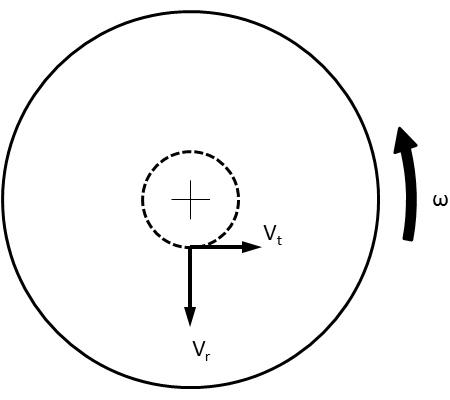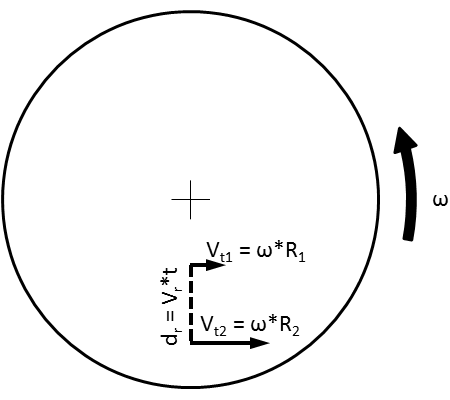 I like Vox in general, but it recently published an interview with John Gray criticizing New Atheism. Now, I'm not enamored with the label of 'New Atheism', but I suppose that if I had to choose where my views mostly align, New Atheism would be it. Now maybe I'm not as closely aligned with New Atheism as I suppose, but I have to say that many of Gray's criticisms, and those of the interviewer, Sean Illing, just don't reflect my own views at all.
I like Vox in general, but it recently published an interview with John Gray criticizing New Atheism. Now, I'm not enamored with the label of 'New Atheism', but I suppose that if I had to choose where my views mostly align, New Atheism would be it. Now maybe I'm not as closely aligned with New Atheism as I suppose, but I have to say that many of Gray's criticisms, and those of the interviewer, Sean Illing, just don't reflect my own views at all.
I'll start by giving my own understanding of New Atheism. Because the existence of gods is an objective question, the best tool to try to determine whether or not any gods actually do exist is science 'loosely defined'* - the systematic and rational study of evidence. Despite some apologetic waffling, most people actually do approach religion looking for evidence - written scriptures, archaeological confirmation of their scriptures, miracles of the divine directly interacting in the world, etc. But I think most people fail in the systematic and rational evaluation of such evidence (and since religions are mutually contradictory, most people are necessarily wrong).
My disagreement with the Gray interview started with the headline itself, "Why science can't replace religion: John Gray on the myths the New Atheists' tell themselves." This is a theme that he repeated throughout the interview - science replacing religion. But that's not the New Atheist position. Yes, science is great at what it does - answering objective questions. It's by far the best method humanity has developed for this purpose. And that does conflict with many of the objective claims coming from religions. But, addressing objective claims is science's only purpose. Science has nothing to say on right or wrong, beautiful or ugly, awe-inspiring or mundane. For those types of concerns, we turn to other fields - ethics, philosophy, art, etc. Setting up the debate as science alone vs. religion is a false dichotomy. (I've written about this in much more detail on Quora, including some passages I lifted verbatim for this paragraph.)
Moving on to the article itself, I'll start with a quote from the introduction, from Sean Illing.
Although they were right about a lot of things, the New Atheists missed something essential about the role of religion. For them, religion was just a protoscience -- our first attempt at biology and history and physics. But religion is so much more than a set of claims about the world, and you can't fully understand if you don't account for that.
Illing is making the New Atheist position seem much less nuanced than it is. Of course New Atheists recognize that there are a huge variety of approaches to religion and varying beliefs among the religious. When it comes to other religions outside of theism, some New Atheists actually embrace them. There are plenty of atheists in Unitarian Universalist church pews. Some atheists even practice non-supernatural versions of more traditional religions such as Buddhism (including Sam Harris, one of the 'Four Horsemen' of New Atheism). It's simply misrepresenting the New Atheist position to say that they see religion as simply a protoscience with no other roles.
New Atheists do tend to focus their criticisms on more literal forms of Christianity, but that's because a) New Atheists tend to live in places where Christianity is the dominant religion, and b) literal forms of Christianity tend to be the more harmful versions in those places (other brands of harmful religion just don't have the same influence in those places). Paraphrasing what I've said before, if religion was all soup kitchens and homeless shelters, or even just spaghetti dinners and Christmas bazaars, New Atheists wouldn't have nearly as much to get worked up about.
Moreover, it's the fundamentalist religionists who are making "a set of claims about the world", so of course New Atheists are going to respond. And to be clear, fundamentalist Christians aren't some fringe group. Somewhere around 38% of Americans are creationists, and many of them push to get creationism taught in schools. So, with only so many hours in a day, of course I'm going to focus my criticisms on those types of religion, rather than more innocuous or nebulous religions that don't so clearly contradict reality or cause as much harm in society.
Something as ancient, as profound, as inexhaustibly rich as religion or religions can't really be written off as an intellectual error by clever people. Most of these clever people are not that clever when compared with really clever people like Wittgenstein or Saint Augustine or Pascal -- all philosophers of the past who seriously engaged the religious perspective.
This seems to be a standard complaint from religiously sympathetic philosophers - New Atheists don't take religion seriously enough. If we did, we'd grapple with the profundity of it all. But yes, smart people from the past really can be mistaken, no matter how much serious thought they've given to problems. Geocentricism was respectable up until the Copernican Revolution in the 1500s. That's millennia of serious, very intelligent philosophers having such a profound mistake about something as simple as the motion of celestial bodies. So I don't think it's hard to imagine they could be wrong about religion, as well, considering the societal pressure and the motivated reasoning of wanting to avoid Hell, and especially considering trying to make sense of the world in a pre-scientific age.
These New Atheists are mostly ignorant of religion, and only really concerned with a particular kind of monotheism, which is a narrow segment of the broader religious world.
Now, maybe Gray is comparing New Atheists to PhD philosophers, but New Atheists tend to be more knowledgeable of religion than the general public. Here's an article describing a poll from a few years ago, Survey: Atheists, Agnostics Know More About Religion Than Religious. Atheists on average knew more about the diversity of religions than believers (e.g Christians knew very little about Buddhism), and atheists even had better knowledge of the Bible than Christians as a whole (but not quite as good as white evangelicals).
I can't resist quoting this statement. It's not wrong, per se, but it does seem like a stereotype of an overly-wordy philosopher:
If Darwinism is right, and I think it's the best approximation we have to the truth about how humans came into the world, then all aspects of the human animal are shaped by the imperatives of survival.
That's like calling heliocentricism the best approximation we have to the truth about how celestial bodies move in our solar system, or a NASA created globe the best approximation we have to the truth about the geography of Earth. I mean, sure, everything we know about the universe is an approximation at some level, but in normal conversation, can't we simply say that certain things are just true? Couldn't he have just said something like, "Since we evolved..."
A bit later, he was making arguments in line with the headline.
There's this silly idea that we have no need for religion anymore because we have science, but this is an incredibly foolish notion, since religion addresses different needs than science, needs that science can't address.
And then this:
Even if everything in the world were suddenly explained by science, we would still be asking what it all means.
That's where religion steps in.
But why religion? Why not secular philosophy? Or ethics? Just because people claim that religion addresses these other issues doesn't mean that it addresses them adequately or gives good answers. Heck, there's no guarantee that there even are satisfying answers to some of these questions no matter how you want to address them.
For example, there are still people who treat the myths of religion, like the Genesis story, as some kind of literal truth, even though they were understood by Jewish thinkers and theologians of the time as parables.
Genesis is not a theory of the origins of the world. It's not obsolete, primitive science. It's not a solution to the problem of knowledge. Religion isn't like that. Religion is a body of practices, of stories and images, whereby humans create or find meanings in their lives.
I get a bit tired of hearing this style of argument, let's call it the Philosopher's Religion, that religious believers of the past were all these sophisticated philosopher types who 'obviously' didn't take their scriptures seriously on a literal level, and that it's only modern day simpletons who corrupt scripture and take Genesis at its word, or even New Atheists misrepresenting the religious to try to make them look more primitive.
Let's take a look at what Saint Augustine had to say about some of the claims of Genesis - one of those 'clever' deep thinkers Gray mentioned earlier in the interview.
They are deceived, too, by those highly mendacious documents which profess to give the history of many thousand years, though, reckoning by the sacred writings, we find that not 6000 years have yet passed.
He also wrote extensively about Adam and Eve in formulating his views on Original Sin. And he clearly saw Adam and Eve as two real-life people. (more info - Augustine of Hippo and Thomas Aquinas on Original Sin and Augustine's Literal Adam)
So, it seems that Saint Augustine was taking the general history from Genesis pretty seriously. Granted, he thought the seven days were metaphorical, but only because he believed God created the universe in an instant. And yes, ancient theologians did have varying views of the degree of metaphor vs. literalism in interpreting the Bible (and not necessarily mutually contradictory, if they thought the Bible could be interpreted on multiple levels), but it's not like theologians who took the Bible as literal truth were a rarity. (I actually cover a bit about the age of the universe and how many theologians accepted a 6,000 - 8,000 year age in a Quora answer.)
The point is, plenty of very smart people throughout history have interpreted the Bible fairly literally, as an actual history of Earth and civilization. Without outside context, there's no obvious reason not to. I wish people like Gray would quit insisting that the 'Philosopher's' interpretation was the original, widely agreed upon view.
There's no doubt that religions have contained many ideas that have caused humans harm. There's not the slightest doubt about that. All human institutions cast a shadow which comes from the evil they carry within themselves.
[skipping ahead a bit]
At the same time, we should remember that many of the secular religions of the 20th century condemned gay people, for example.
Homosexuality was illegal for most of the time that the Soviet Union existed. Doctors who performed abortions in communist Romania could be sent to prison, and in some cases even subjected to capital punishment. Many of the worst features or the worst human harms inflicted by monotheism have been paralleled in the secular religions of modern times.
So ideas do have consequences. All we can do is try to embody these traditions as much as possible. There isn't some form of life, not even an imaginary type of pure liberalism, that is free of these terrible consequences.
Gray's point about 'secular religions' is a good one, but also one that New Atheists would agree with. When looking at the example of Soviet Russia, the problem was the authoritarianism and forced dogma. Lysenkoism is an oft-cited example of how rejection of evidence can lead to horrible outcomes. So yes, New Atheists promote critical thinking and following evidence. They tend to be skeptics first, and the atheism is just fallout from following the evidence. If you merely reject gods but don't follow the critical thinking and evidence-based reasoning, you may be an atheist, but not really part of New Atheism.
Moving past secular religions, Gray's observation that secular institutions have done bad things is entirely unremarkable. That's human nature. The question is not whether all the ills of the world are attributable to religion, because they're obviously not. The question is whether religion is a positive or negative influence on balance, remembering that it will depend on the particular religion. (And even this would only a consideration for how vigorously atheists should criticize different religions - it doesn't change whether or not they're true.)
Let me put it another way. Many secular pursuits are a blank slate as far as morality. They'll take on the morality of the society around them, but they're morally neutral. Religions propose to define morality. They're not neutral. They don't just take on the morality of the surrounding society, but also shape that morality. And when you have a set of scriptures like the Bible, there are a lot of distasteful moral lessons. I mean, do you really think there would be anywhere near as much discrimination against the LGBT+ community without Christian 'morals'?
So yes, as humanity increasingly leaves behind traditional religion (e.g. 5 key findings about the changing U.S. religious landscape), members of society will have to ensure that we don't simply let religion be replaced by non-supernatural alternatives. But given the numerous studies on the topic (e.g. Secular Societies Fare Better Than Religious Societies, I don't think that's something we need to be overly concerned about.
I think you've put it very closely to the way I put it in the book. Most forms of organized atheism are attempts to fashion God surrogates. In other words, one of the paradoxes of contemporary atheism is that it's a flight from a genuinely godless world.
I'm most interested in the atheists who've seriously asked what it's like to live in a godless world. Not to construct some alternative God, like reimagining humanity as some collective agent that manifests itself through history or science or some other redemptive force.
I'm not really sure how Gray thinks atheists should be responding to a godless world. Are we supposed to be more solemn once we realize there's no god running the universe and looking out for us? Going around in a funk because we're on our own and there's no cosmic justice? Or are we supposed to be happy once we realize there's no cosmic tyrant who can condemn souls to Hell on a whim, or for the crime of doubt? It really all depends on your viewpoint and which conception of god(s) you're considering.
And what about that last sentence? Many people I know would like for all people to work together to try to make a better society. It's a goal, an aspiration we hope to accomplish. And yes, we often talk about 'society' as a collective, and we'll use collective terms like 'zeitgeist' in our discussions of society. Are New Atheists supposed to ignore these social aspects of humanity and become misanthropes, and leave all that social cooperation to the religious? You can recognize that groups have collective behaviors and emergent properties without pretending there's anything mystical or 'redemptive' about it.
I don't know what more of a reaction there should be to a godless world other than saying that the universe is what it is, and it's in our own hands to fashion society how we want it to be.
I think we should regard religions as great works of the human imagination rather than pictures of the world intended to capture what is empirically true. Any atheism that fails to do this will invariably miss what is most essential and enduring about religion, and probably make the mistake of smuggling religious assumptions into their secular alternative to religion.
I would challenge Gray to visit First Baptist Church here in Wichita Falls on a Sunday morning and poll the parishioners about their religious beliefs. Would they be okay with describing Jesus as merely a 'great work of the human imagination'? Does it matter to them whether the crucifixion and resurrection were 'empirically true', or would it be fine if those were metaphorical myths built up over the years? I'm willing to bet a very large sum of money that these religious people actually do care a great deal about the empirical truth of their religion.
I think we have to own up to it, because the danger of thinking that science can provide values has been demonstrated many times. What often happens is that science simply validates the ruling values of the time, and in the 19th and 20th centuries, those were racist values.
Refer, again, to what I quoted from myself up above. Science neither defines nor validate values. It's an attempt to determine objective truth. Values come from other parts of humanity outside science.
Aside from the many mischaracterizations of New Atheism in this interview, what always gets me about views like these is the conception of what religion should be, the Philosopher's Religion as I termed it up above. Gray's not just criticizing New Atheists, he also seems to be implying the 'right' way to be religious. Granted, there are plenty of people who view religion in this more metaphorical, values-only way, but it's not the mainstream view of the masses. Most religious people actually do literally believe in gods and spirits and all the other supernatural elements. Sure there are emotional reasons that motivate people to accept religion, but people aren't accepting the purely emotional reasons and then rejecting all the empirical claims. They take their holy books at least somewhat at face value. They don't see the claims as 'as great works of the human imagination'. They really, honestly believe that many of the events described did indeed literally happen.
But even then, the emotional answers that religion gives aren't always the best answers available. As I've said numerous times throughout this response, there are better approaches than religion to these more subjective aspects of our lives, such as philosophy, ethics, and art. Do you really want people getting their ethics from books written thousands of years ago by anonymous authors with unknown motivations? Or would you rather they did a little bit more applied thinking on the issues?
Image Source: BBC
---
*That definition comes from the evolutionary biologist, Jerry Coyne. Speaking of which, he's written his own response to this interview. I purposely avoided reading it, though, until I was done with this response, to make sure I wouldn't be biased by what he had to say. But if you want to ready what Coyne had to say, you can follow this link:
John Gray and Sean Illing go after New Atheism for the bazillionth time, but offer no new (or incisive) arguments
 In discussing religion with Christians, there seems to be this blind spot about the vast array of different religious beliefs out there. Many seem to see religion as a dichotomy - either Christianity is true, or religion in general is false. In many of their arguments, they just don't seem to even consider other religions (Pascal's wager is an obvious example of this blind spot). It results in many of their arguments being special pleading, but since they seem to be so unaware/dismissive of other religions, I'm not sure they even realize it's special pleading. But the end result is still that the arguments aren't particularly persuasive.
In discussing religion with Christians, there seems to be this blind spot about the vast array of different religious beliefs out there. Many seem to see religion as a dichotomy - either Christianity is true, or religion in general is false. In many of their arguments, they just don't seem to even consider other religions (Pascal's wager is an obvious example of this blind spot). It results in many of their arguments being special pleading, but since they seem to be so unaware/dismissive of other religions, I'm not sure they even realize it's special pleading. But the end result is still that the arguments aren't particularly persuasive.



 I like Vox in general, but it recently published an
I like Vox in general, but it recently published an  I know that science reporting ain't what it used to be. And even in the 'old days', when newspapers had decent sized science departments, headlines could be misleading. Still, the reporting on a recent study has irked me enough to become a cranky old man and call it out here on my blog.
I know that science reporting ain't what it used to be. And even in the 'old days', when newspapers had decent sized science departments, headlines could be misleading. Still, the reporting on a recent study has irked me enough to become a cranky old man and call it out here on my blog.